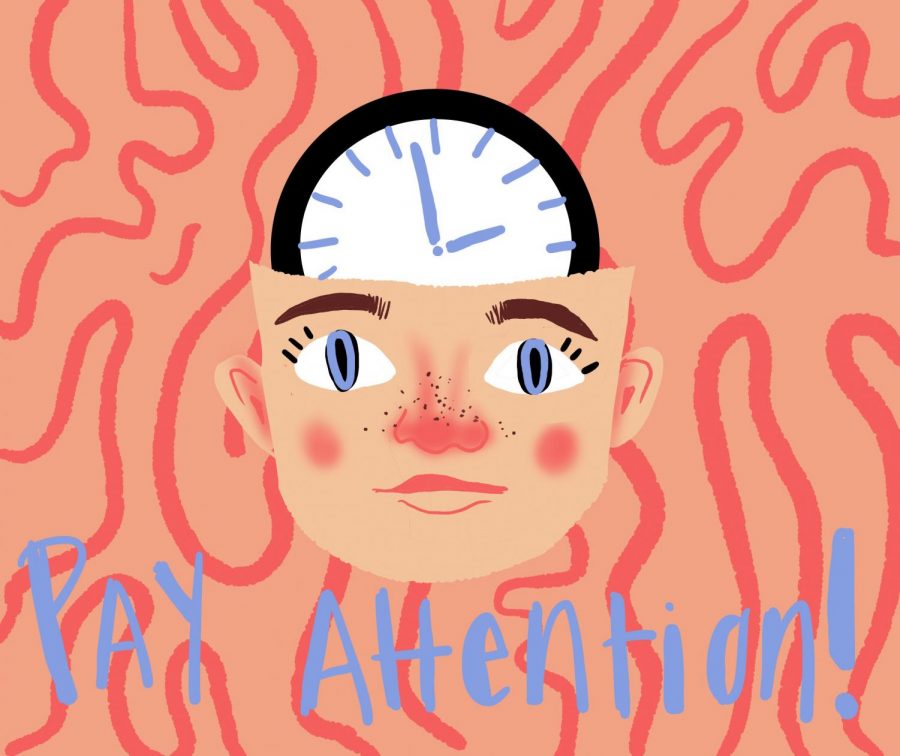Evolution of the Attention Span
Does technology affects concentration?
Digital cartoon created by Katie Kerrigan
According to one of Fara Wiles freshman classes, the many distractions include phone stimuli, phone notifications, and classroom peer conversations.
December 6, 2019
As the digital age develops, electronic-led lives are affecting young adults in more ways than initially realized. Always being connected to a screen, whether at home, school or on the street affects the ability to avoid distractions.
In a study conducted by Microsoft, the average attention span of teens and young adults in the year 2000 was 12 seconds. In 2016, the seconds reduced to eight; lower than a goldfish’s. The effects of this attention span reduction impact students in all areas of life, specifically the classroom. The ability to focus, multi-task, and remember things is deteriorating when compared to young adults just 10 years ago.
“I think teens today are constantly on sensory overload,” said VA/US and World History teacher Erin Lunenfeld. “They have so many things going on and so much access to stimulus on their phones.”
Another study created by the George Lucas Educational Foundation has linked teen’s distracted phone use to lower, failing grades. With 54 percent of students confessing to using their phones in class, the inability to focus on one task without dividing attention affects retention, or information recall later for tests or assessments.
“It can be difficult keeping students’ attention… it is hard competing against cell phones,” said Economics and Sociology teacher Kristen Hager. “I believe students have more access to distractions in the classroom.”
Outside of phones, Pew Research center has noted 45 percent of young adults are online constantly, in comparison to only 24 percent in 2014. However, the average web page visit now only lasts 8 to 20 seconds, with only 20 percent of the website’s content being read.
“I try to organize my class so that students don’t have to sit and listen for too long on any given day,” said Lunenfeld. “I also try to connect with my students and keep the content relevant, in an attempt to keep their attention.”
Although the endless stream of notifications seriously impacts concentration, there are ways to help maintain focus. Putting away and silencing cell phones, restricting access to irrelevant sites, and limiting audible electronic interruptions (such as TVs) are simple ways to control electronic distractors.
“It’s more of an everyday thing now,” said freshman Akeeb Kalan. “You don’t always realize you’re being distracted.”


